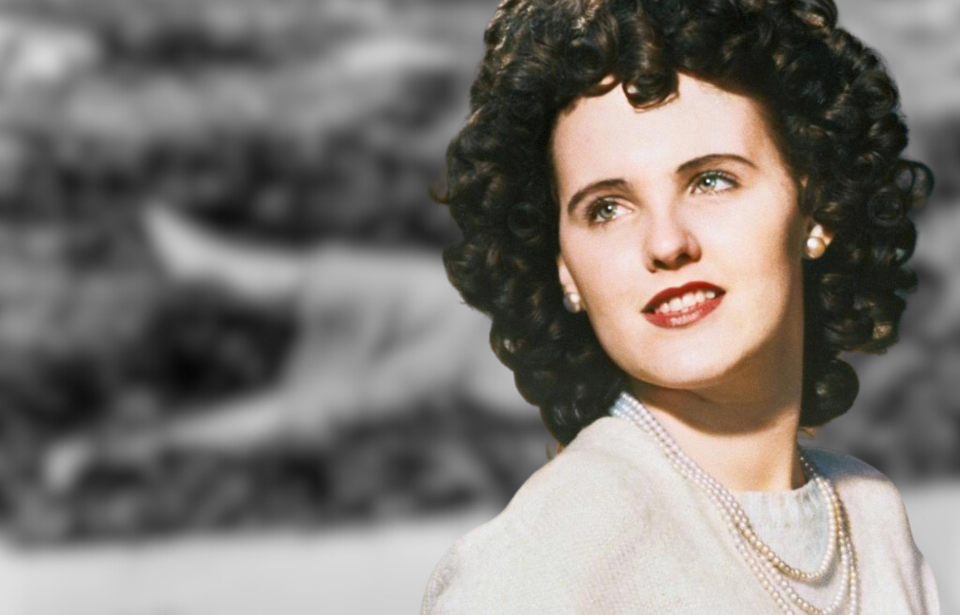The Black Dahlia murder is arguably one of the most horrific and sensationalized crimes of the mid-20th century. In July 1947, 22-year-old Elizabeth Short’s mutilated body was discovered, kicking off a decades-long investigation that has since gone cold. The case has since taken on a life of its own, with online sleuths asking just one question: will it ever be solved?
Elizabeth Short’s Hollywood aspirations
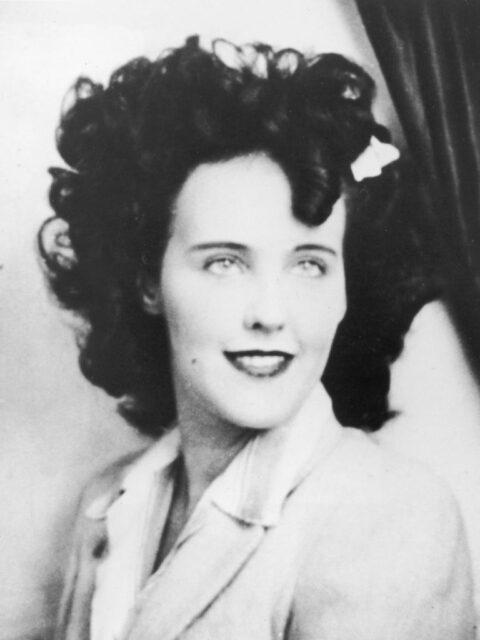
Elizabeth Short spent her early years growing up in New England as the third of five children. When she was young, her father lost the majority of his savings in the 1929 Stock Market Crash, prompting him to abandon the family – in fact, it was believed Cleo Alvin Short, Jr. had taken his own life, given the suddenness of his disappearance and his car being found near a bridge.
In late 1942, Short’s mother, Phoebe May Sawyer, received an apology letter from her presumed-deceased husband, in which he stated he was, indeed, alive and living in California. This prompted her daughter, then 18 years old, to relocate to Vallejo to live with him. Their time together was short, however, as they frequently argued, and Short moved out the following January.
While in California, Short got a job at the Base Exchange at Camp Cooke – now Vandenberg Space Force Base – where she met and fell in love with a US Army Air Forces sergeant, who was reportedly abusive. She eventually left him and moved to Santa Barbara, where she was arrested for underage drinking. This prompted the authorities to send her back home to Massachusetts.
Not wanting to return home, Short, instead, went to Florida, where she met a decorated USAAF officer, who asked her to marry him. Sadly, their union wasn’t meant to be, as he was killed while serving overseas in the Second World War. Mourning and with a dream of becoming an actress, the then-22-year-old moved back to California – this time, Los Angeles – where she found work as a waitress.
A gruesome discovery…
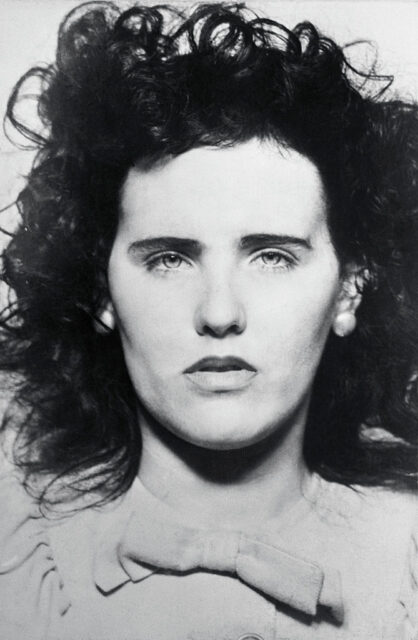
On January 9, 1947, Elizabeth Short was dropped off at the Biltmore Hotel after a short trip to San Diego with a 25-year-old married salesman she was dating. According to the man, she was meeting her sister, who was visiting from Boston.
Little is known about what Short got up to between then and the morning of January 15, when her body was found. It’s reported that staff at the Biltmore recalled seeing her using the lobby telephone, and other witnesses said they saw her at the Crown Grill Cocktail Lounge on South Olive Street, located approximately 600 meters from the hotel.
On January 15, 1947, Short’s body was discovered by a young mother who was out for a walk with her two-year-old daughter on South Norton Avenue, between 39th and Coliseum streets. At first, the woman believed the remains were a mannequin – but this quickly turned out to not be the case.
When officers arrived on the scene, they were met with a gruesome sight. Short’s body had been cut in two at the waist, with her body drained of blood, giving the remains a pale white hue. There were signs of mutilation, with pieces of her thighs and breasts cut off and her intestines removed, the latter of which was found neatly placed beneath her buttocks. The 22-year-old had been bludgeoned, and her mouth had been cut into a “Glasgow Smile” – think the Joker in The Dark Knight (2008).
An autopsy revealed Short had been killed elsewhere and her body dumped where she was found, likely between the evening of January 14 or the morning she was found. The body had been cleaned with gasoline to remove evidence, and the cause of death was determined to be a cerebral hemorrhage, the result of the trauma she’d received to her skull.
The ‘Black Dahlia’ murder becomes a media sensation
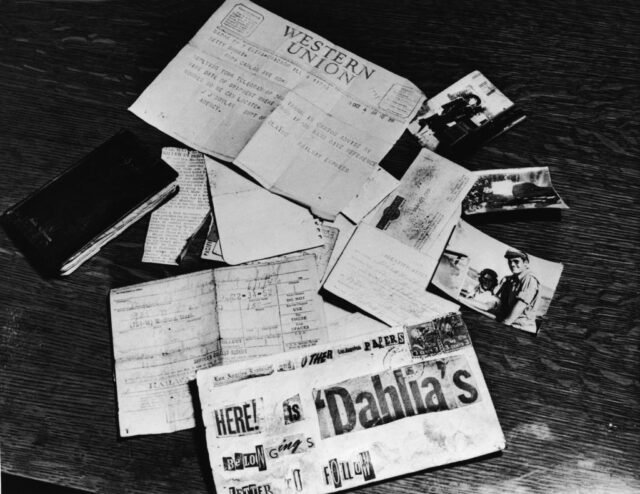
The FBI was able to identify the remains as Elizabeth Short’s via her fingerprints, given her prior employment with the military and her arrest in 1943. The investigation kicked off immediately, with the media circus coming soon after. While the local area was no stranger to horrific crimes against women, there was something different about this case. It garnered so much attention that the public dubbed it the “Black Dahlia” murder, after the 1946 film, The Blue Dahlia, starring Veronica Lake and Alan Ladd.
Wanting to gain more information on the victim, reporters with the Los Angeles Examiner stooped to an all-time low, calling Short’s mother and claiming the slain woman had won a beauty contest. Only when they’d gotten what they wanted did they reveal that the 22-year-old had been killed.
The case garnered both local and national attention, and as the media learned more about Short’s life, the more critical they became of the decedent, branding her a “sexual deviant.” This wasn’t helped by those investigating the murder, with a report from the Los Angeles Police Department stating:
“This victim knew at least fifty men at the time of her death and at least twenty-five men had been seen with her in the sixty days preceding her death… She was known as a teaser of men.”
The media circus would ultimately become the source of blame for how the investigation panned out – or didn’t. Investigators told their superiors that reporters withheld evidence called into them, as opposed to the police station, and accused them of answering calls at the station, preventing detectives from collecting what could have been crucial tips.
A message from the killer?
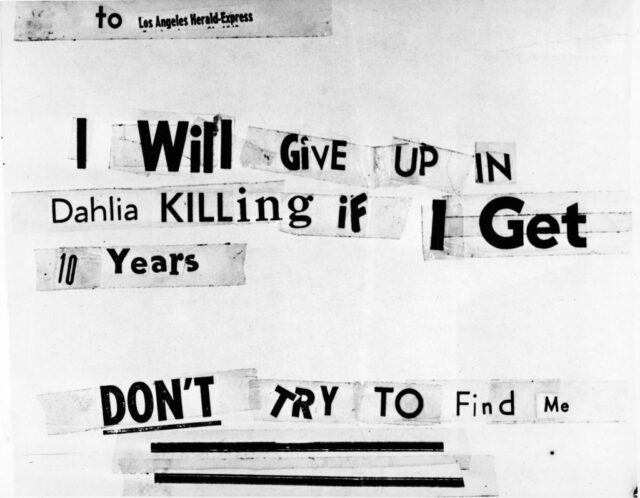
Just a few days after Elizabeth Short’s body was found, on January 21, 1947, the Los Angeles Examiner received a call from a man who claimed to be the killer. The unknown individual allegedly said he’d turn himself in, but only after the authorities had looked for him a bit more. He later changed his mind and declined to reveal his identity.
Three days later, the Examiner received an envelope, which contained a message written with newspaper clippings, Short’s birth certificate, photographs, business cards, names written on a piece of paper and an address book belonging to a man named Mark Hansen. That same day, a black suede shoe and handbag – both confirmed as belonging to the victim – were found on the lid of a garbage can, not far from South Norton Street. Everything had been wiped down with gasoline.
Given the presence of his address book, Hansen was looked into as a possible suspect in the case, but was ultimately cleared of any involvement. The items, however, prompted a wide-scale search of the area surrounding the scene where Short’s body was found, with City Councilman Lloyd G. David putting up a $10,000 reward for information.
On March 14, 1947, just under two months after the grim discovery, a pile of men’s clothes and an alleged suicide note were found on the beach in Venice. No one was found with the items. The note read:
“To whom it may concern: I have waited for the police to capture me for the Black Dahlia killing, but have not. I am too much of a coward to turn myself in, so this is the best way out for me. I couldn’t help myself for that, or this. Sorry, Mary.”
The investigation into the ‘Black Dahlia’ murder goes cold
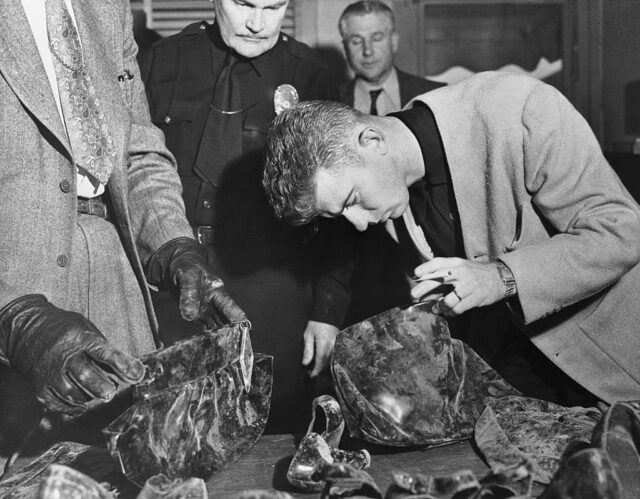
By the spring of 1947, the investigation into the Black Dahlia murder had gone cold. Between then and when Elizabeth Short’s body was found, over 50 suspects – men and women – were interviewed, including students from the University of California Medical School.
There were reportedly 150 suspects in the case, but no arrests were made. As well, more than 500 individuals have confessed to the crime, despite the fact some of them weren’t even born when the murder occurred.
According to the FBI, it’s likely the case will never be solved, given the amount of time that’s passed and the lack of hard evidence, not to mention untrustworthy witnesses. Given how long it’s taken to find a resolution, the killing remains the oldest cold case in Los Angeles.
Theories abound regarding who killed Elizabeth Short

There are far too many theories surrounding the Black Dahlia murder to talk about, so we’ll focus on the three that have garnered the most attention. The first alleges physician George Hodel killed Elizabeth Short. A suspect in the original investigation, Hodel is believed to have previously murdered his receptionist and sexually assaulted his daughter – crimes that only add fuel to the fire regarding his supposed guilt.
Suspicion regarding Hodel was reignited by his son, former Los Angeles Police Department homicide detective Steve Hodel, after he came across some disturbing items in his father’s belongings. This, along with him fleeing the country in the 1950s, left Hodel wondering if his father could have used his medical expertise to cut the body and inflict the wounds that were noted.
Hodel believes in this theory so much that he even had a cadaver dog come to his childhood home, where it hit on the scent of human remains. He also sent his father’s handwriting in to an expert (the results were inconclusive), and gained access to the wiretap investigators placed on his phone, which recorded a call of him discussing Short’s murder.
In 1991, Janice Knowlton introduced a new theory into the mystery of the Black Dahlia, stating her own father, George Knowlton, killed Short and two other women. The former was 10 years old at the time of the murder and alleged she’d seen Knowlton use a claw hammer to bludgeon Short to death. This has been contested by her stepsister, and no evidence has been found to prove it.
The final theory worth noting surrounds Leslie Duane Dillon, a hotel bellhop and a one-time mortician’s assistant who was, at one point, the prime suspect in the investigation.
In 1949, he sent a letter to the LAPD’s psychiatrist under the moniker “Jack Sand,” in which he claimed an acquaintance by the name of Jeff Connors killed Short to prevent her from revealing “an affair not considered proper by the average person.” He was also aware of information about the case that the public wasn’t privy to. However, he was later released, as was Connors.
Legacy of the ‘Black Dahlia’ murder
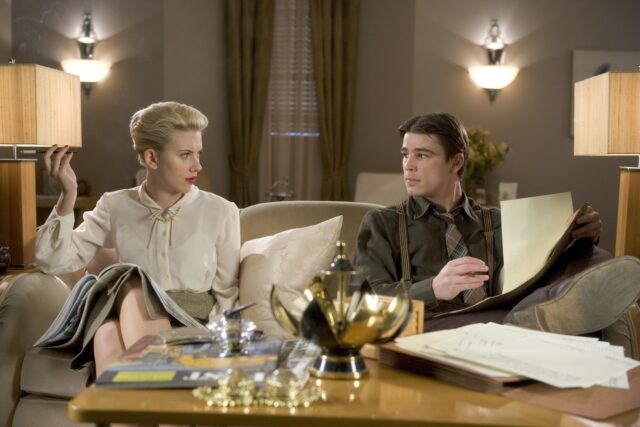
Given how sensational the Black Dahlia murder was – and still is – it’s no surprise that the case has continued to hold a place in the public consciousness, especially when it comes to pop culture. What happened has been covered by various podcasts, along with online content creators, with Buzzfeed Unsolved bringing the case to a younger audience in 2019.
More from us: What Happened To The Vanderbilt Fortune?
Elizabeth Short’s life and death have also been adapted into books, movies and television shows, with the most popular being James Ellroy’s 1987 novel, The Black Dahlia. While it’s not necessarily factually correct, it did interest readers enough that it became a movie in 2006, starring Scarlett Johansson and Josh Hartnett.
